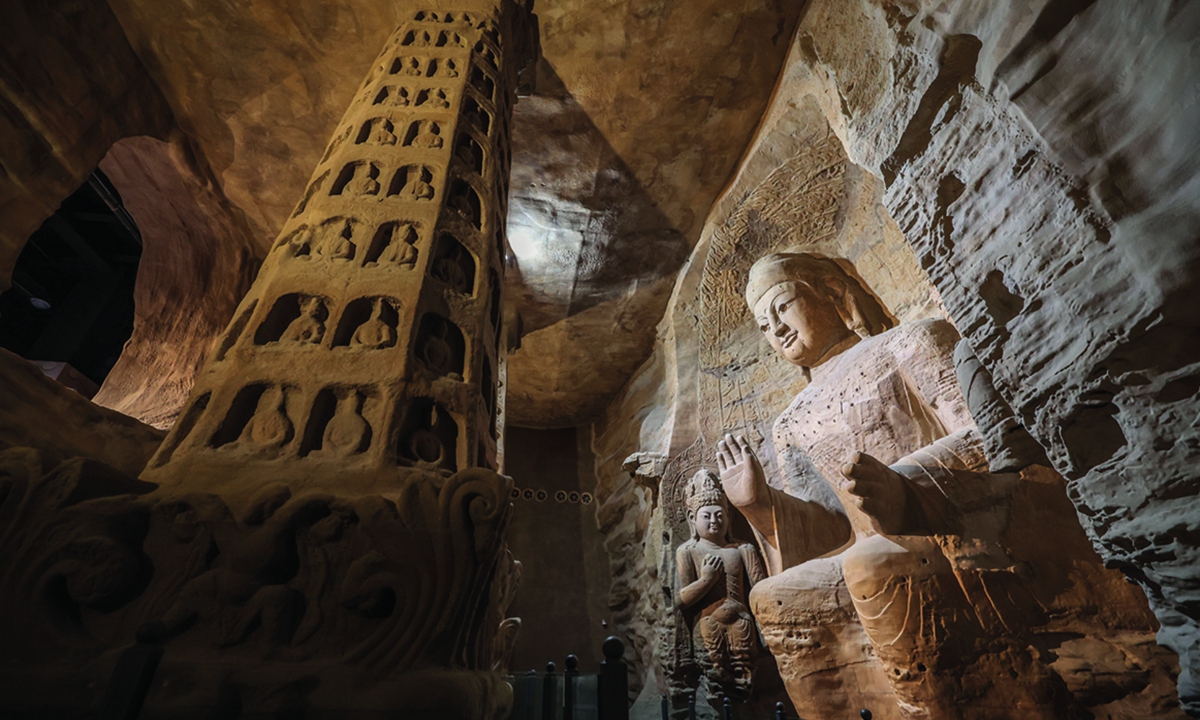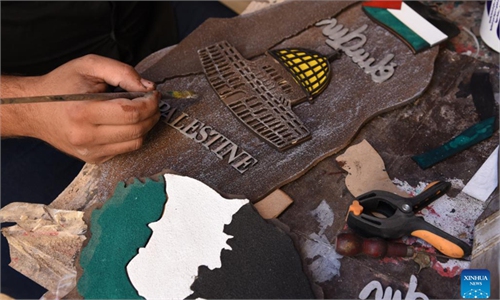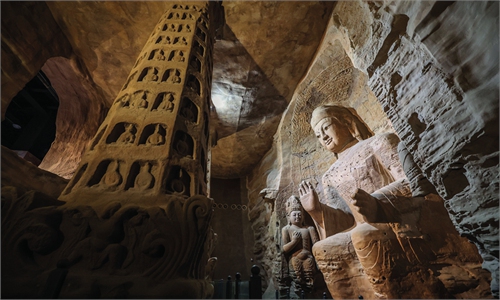ARTS / CULTURE & LEISURE
Chinese authorities vow to promote hi-tech innovation in cultural heritage protection

The 3D printed Yungang Grotteos in Qingdao, Shandong Province Photo: IC
Chinese authorities vow to use innovative, high-tech measures to strengthen cultural heritage protection, officials and experts said at the national cultural relics and technology conference on Friday afternoon.
The event was held based on recent calls for technological innovation in protection of relics issued by 13 departments including China's Ministry of Culture and Tourism (MCT) and the National Cultural Heritage Administration (NCHA).
China's Deputy Minister of Culture and Tourism Li Qun, who is also head of the NCHA, stated at the conference that cutting-edge technological support for Chinese archaeology has made significant advances in various fields, such as carbon-14 dating. There have also been breakthroughs in deep-sea archaeology techniques, detection of organic residues, analysis of ancient DNA, and field archaeology informatization.
He also mentioned that with the assistance of satellite remote sensing, Beidou Navigation Satellite System positioning, big data, cloud computing and more, the digitization of China's cultural heritage management has achieved remarkable results. Examples include virtual tours of the Great Wall and digitized Mogao Grottoes in Dunhuang, showcasing the power of technology in presenting cultural artifacts.
China is willing to share these experiences with the world and plans to enhance collaboration with overseas archaeological research institutions, including joint archaeology efforts and jointly addressing topics related to world heritage protection, Li stated, adding that within frameworks like the Belt and Road Initiative (BRI) and the Alliance for Cultural Heritage in Asia, China aims to strengthen cooperation in cultural heritage conservation with countries along the BRI as well as various Asian nations.
Chen Fahu, academician of the Chinese Academy of Sciences (CAS) and a research fellow at the Institute of Tibetan Plateau Research under the CAS, told the Global Times on Friday that his team focuses on studying the ancient ecology and human adaptation on the Qinghai-Xizang Plateau. Technological innovation, such as ancient protein analysis, has advanced their archaeological work, providing important scientific support for understanding the evolution of the Chinese nation.
For instance, the team used ancient protein technology to identify a jawbone from Baishiya Karst Cave - the earliest archaeological site ever discovered on the Qinghai-Xizang Plateau - as belonging to the Denisovan hominin. Subsequently, from numerous unidentified bone fragments excavated at the site, they identified a Xiahe mandible, suggesting the presence of an ancient Denisovan population in the current Xiahe county of Northwest China's Gansu Province in the northeastern part of the plateau around 40,000 years ago.
In the new era, Chinese archaeology needs to continue employing the latest technologies from cutting-edge disciplines such as biology, physics, chemistry, and geology to analyze ancient remains. Extracting information about ancient humans, social development, and the environment as much as possible can help to understand prehistoric human societies, contributing to the nation's major cultural strategies, he said.
Li Liusan, director of the China Academy of Cultural Heritage, highlighted the successful organization of the General Assembly of the Alliance for Cultural Heritage in Asia this year. He told the Global Times on Friday that the alliance's establishment has provided a platform for Asian countries to strengthen exchanges and mutual learning in the field of cultural heritage.
To sustainably elevate the level of cultural heritage technology, Li Liusan emphasized the need to fully unleash the vitality of technological innovation in cultural relics. The institute will focus on expanding scientific research cooperation and talent development in the field of cultural heritage protection technology with Asian countries in the future.




